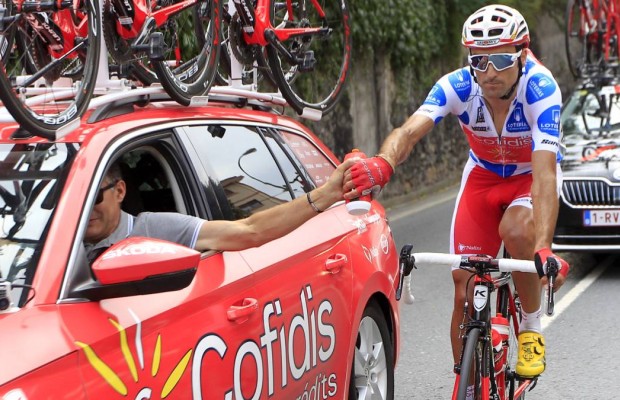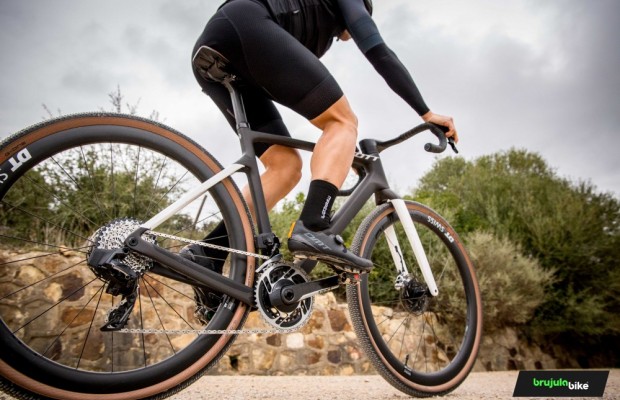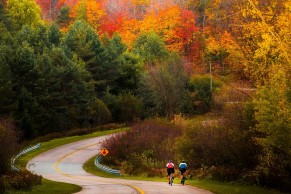All about Zone 2: the forge of cycling
Cycling is an endurance sport, so this quality becomes the most important to develop and serves as the basis on which to build optimal physical fitness. Although in recent times other ways have been found to promote endurance, even using high-intensity training, the truth is that, to achieve an already important level as a cyclist, volume and work in zone 2 become very important in the planning of our training.

The importance of volume in cyclist training
As we have explained on several occasions, when quantifying the training load, two parameters are used: intensity, that is, the pace or effort at which we carry out these trainings, a figure that we are going to determine through our heart rate monitor, power meter or, more traditionally, through a scale of perceived exertion; and on the other hand the volume, that is, the duration of the training quantified in time, not in kilometers as traditionally measured in cycling.
Obviously, training must play with the balance between these two parameters, that is, long outings cannot be very intense and high-intensity outings will necessarily have to be short. In fact, when the intensity rises to the limits of our capabilities, we opt for fractionated training in series and intervals simply to be able to subject the body to that load for enough time to obtain adaptations.
RECOMENDADO

Change wheels if you want to transform your bike's behavior

What bike size do you need? Here's how to find out

How does age affect performance and recovery?

How long cyclists can be pushed when handed a sticky bottle?

10 tips for safer and faster downhills on road bikes

The best gravel groupsets of the moment

The volume parameter usually has greater importance at the start of the seasons where training of increasing duration predominates but carried out in the well-known Zone 2 or the intensity range in which aerobic resistance is worked almost exclusively. A zone in which muscle cells are creating adaptations with which they improve their energy efficiency being able to use fats as an energy source for longer.
Training in this way does nothing but build an aerobic base that makes it possible to make longer efforts without being affected by fatigue as well as achieving a greater recovery capacity after intense efforts so the greater our aerobic capacity the better shape we will achieve.
This type of training is so important that, believe it or not, professionals spend most of the time pedaling in this zone throughout the year, the only thing is, they have such a level that at the pace they go in zone 2 as the season progresses a medium cyclist goes with his tongue out. However, cyclists with a certain level are often surprised, when they have the opportunity to coincide with professionals, how they maintain a very calm pace during these sessions, yes, sustained almost mathematically for 5 or 6 hours with just a short coffee break.

In fact, volume becomes the main limiting factor when increasing the training load for those who have to combine the bike with their work and family life when improving their level since, although advances in training methodologies have achieved that aerobic qualities can be improved with shorter workouts, if we do not work on resistance specifically we will not be able to achieve optimal adaptations and, as we explained before, we will have a limit in the intensity work that we can introduce.
How to face our rides in zone 2
Often, zone two is tremendously ignored by the common cyclist who on the one hand stagnates in a certain duration of their workouts, it is rare to see cyclists make routes of more than three or four hours, and on the other hand when they go out simply to ride they end up picking up even with their shadow, subtracting effectiveness from this type of training. As many coaches often say: the cyclist when it comes to going slow does not go slow enough which prevents him from going fast enough when it comes to going fast.
Therefore, it is especially important to pay attention to the intensity during training in Zone 2 and be rigorous. Nothing will happen if to overcome a bridge we stand up and the watts rise for 10 seconds above that zone but, being strict, a ride in zone 2 consists of riding at a constant pace keeping the intensity in that zone. That is why, when it comes to this type of training, we must choose our companies very well and going out in a group is usually not the best option, especially if there are disparity of levels.

When we go in a group, and we manage to find one that does not pick up on each slope, the problem usually comes from the fact that, when it comes to pulling, we have to go beyond zone 2 to avoid complaints of if it goes too slow, etc. while, if we stay on the wheel we often go below that zone 2 so the training becomes inefficient. However, these long and constant workouts at a low pace are greatly enjoyed in company since the low pace allows for a pleasant conversation. As we say, no problem if we manage to find the right company.
As we say, it is essential to maintain the pace in zone 2 as long as possible to achieve the greatest effectiveness so we will keep an eye on the cycle computer constantly to ensure that we do not get excited, easy at the beginning of the routes where, at the intensity of zone 2 we feel that we are stopped, nor fall short, which occurs at the end of a long day in which fatigue begins to accumulate and we have to pay attention so that the watts do not decline.

As a reference, it is a pace where we could maintain a conversation perfectly but, in turn, perceive that we are making a certain effort although sustainable over time. Obviously, to face this type of training we will choose a terrain in which it is easy for us to ride constantly, we will not hesitate to throw sprockets uphill or lower the plate in each minimum climb to keep the watts at bay even if the speed drops. In any case, the plain becomes our best ally to carry out training in zone 2.
For many they are boring workouts and they end up giving in and letting themselves be carried away by the desire to squeeze however, if we comply to the letter, the months of series and intervals will come and we will see how our physical form grows like foam at the same time that, the zone 2 workouts that we continue to carry out advanced the season we will be able to do them at a much higher pace. You just have to be patient to reap the fruits of what you sow during the winter when spring or summer arrives and we face the challenges we have set for ourselves.